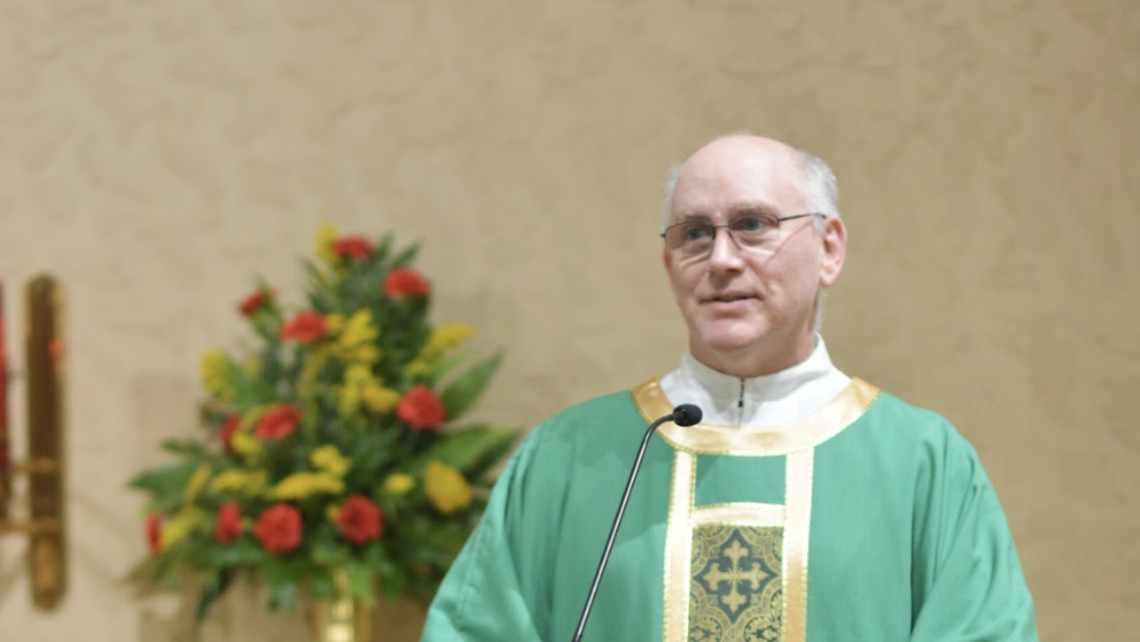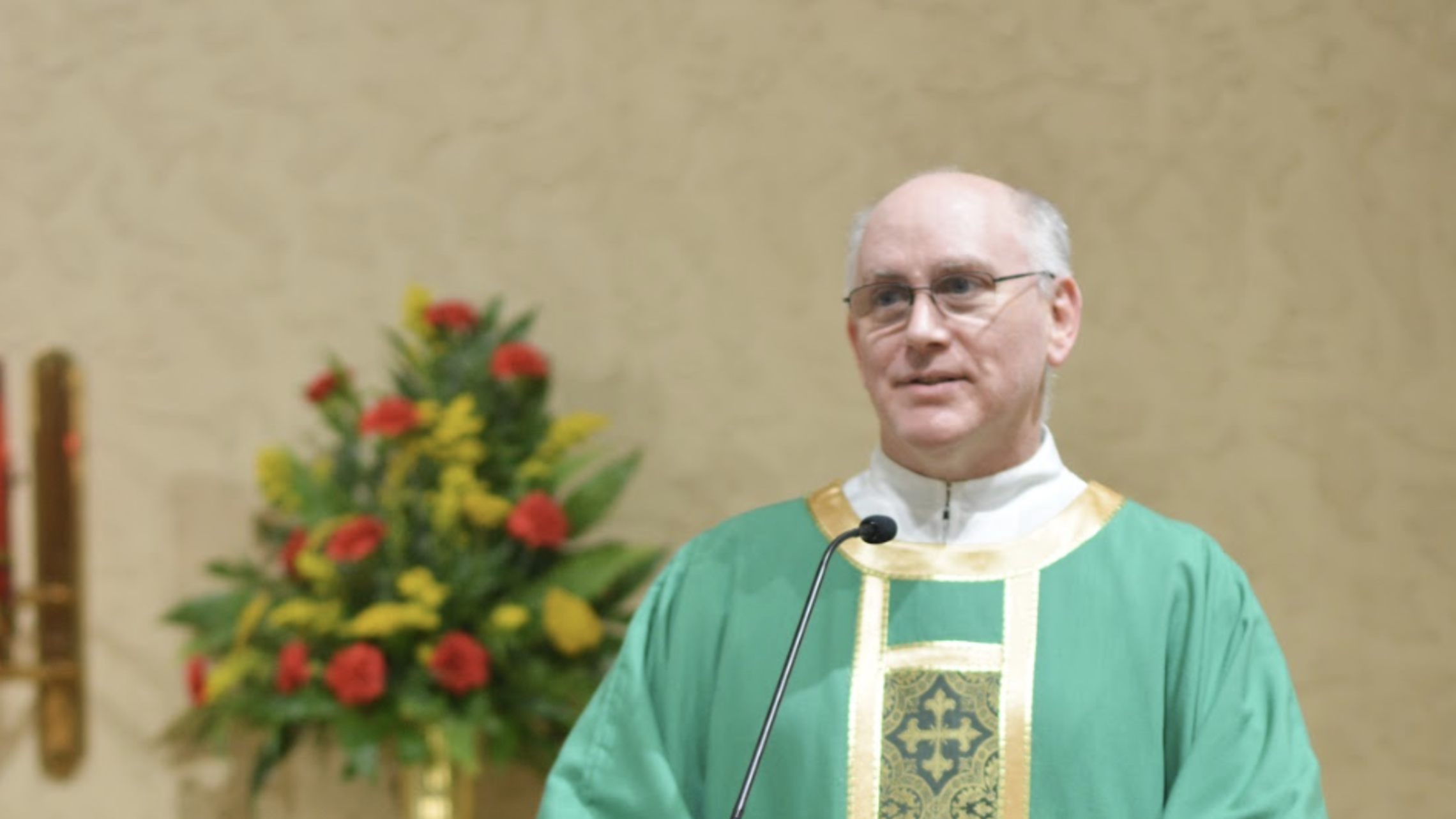
The Solemnity of the Most Holy Body and Blood of Christ Cycle B
Exodus 24:3-8, Hebrews 9:11-15, Mark 14:12-16, 22-26
Of all the theological divisions between the Roman Catholic Church and our Protestant brothers and sisters, the understanding of the Eucharist is one of the single biggest division yet remaining. Of course, one need not look to other churches to see the difference in understanding: most polls show that a majority of Catholics do not totally accept the true presence of Christ in the Eucharist. So maybe it is fitting that the Church configured the liturgical year so as to put this day dedicated to its celebration just after last week's Solemnity of the Holy Trinity, another very difficult concept for many to understand, and quite frankly, me as well. And yet, both are incredibly important concepts for Christians and reward those who would take the time to try to understand them.
Those who would deny the true presence have to contend with the simple statement, made in today's Gospel, “Take it; this is my body” [Mark 14:22]. Now, this seems sufficiently direct, but Protestant theologians such as John Calvin have protested that Communion is merely symbolic, and argue that Christ also said that He was a lamb, or a shepherd, neither of which was literally true but only a figurative representative of His nature. And this can cause some confusion, since the verb “to be” can be used to describe both real attributes as well as symbolic natures of something. So how does one decide what exactly is the meaning of “is” in this passage?
I can make three arguments for the true presence. First, Christ did not merely say, “This is My body.” He said, “Take it; this is My body.” When Jesus says “Take it,” He is asking that the Apostles take a real thing, the bread that He has just broken. So when He immediately then says, “this is My body,” He is then speaking of the nature of the item that they are taking, a real nature to match the real substance that they are holding in their hands. Unlike where Christ says He is the Good Shepherd and then goes on to describe exactly what He means by that, here Jesus says it and leaves it there. He means it just as He states it, and it requires no further explanation.
A second argument would come from John's Gospel, chapter 6, in the Bread of Life Discourse. Listen to these two verses: “The Jews quarreled among themselves, saying, 'How can this man give us [His] flesh to eat?; Jesus said to them, ‘Amen, amen, I say to you, unless you eat the flesh of the Son of Man and drink His blood, you do not have life within you' [John 6:52-53]. Now you can make an argument that Christ is still speaking figuratively, but this is a poor argument given that He is speaking directly in answer to a question about it how one should understand His teachings literally. And then at the end of this chapter in John we learn that “Jesus knew that His disciples were murmuring about this, He said to them, “Does this shock you?” [John 6:61]. It also says that, “As a result of this, many [of Jesus’] disciples returned to their former way of life and no longer accompanied Him” [John 6:66]. These exchanges would to most reasonable people be clear, and unless you subscribe to a Christianity which allows you to pick and choose which Scripture passages you like and which ones you want to go away, we must all deal with it.
But the third argument is for me the best. The true presence is the teaching of the Church from its beginning. Saint Paul discusses the commemoration of the Lord’s Supper in his letter to the Corinthians [1 Cor 11:23-29], and in fact this is the basis for the words of consecration we will hear in just a few minutes in the Eucharistic prayer. Saint Augustine and the early Church Fathers all believed it. The great theologian, Saint Thomas Aquinas, believed it, and he is also the author of many of the prayers in the Mass for today. Saint Francis, Saint Mother Teresa, Saint Catherine, Saint Maximilian Kolbe, Saint Benedict, whatever saint you look up to – they all believed it. Count me among their numbers – they are the ones with whom I want to associate myself. That doesn’t mean that I can explain it, nor that any of them can explain the mystery, although maybe they were given the grace by God to see it more clearly than I can. The fact that it retains its outward appearance but changes into Christ’s body is a concept so mystical that I cannot understand it. But I know that there are many things in life that I don’t understand but are nonetheless true.
It is the height of human arrogance to assume that we can know everything, or that something that we don’t understand can’t be true. I took a course in modern physics in college and memorized equations based on Einstein’s theories on relativity, and I could calculate the changes due to an object when it approaches the speed of light, which causes its mass became significantly larger while simultaneously its length became significantly shorter. That is to say, much more mass, much smaller size. I understand the equations and why they work as they do, but still I don’t understand this at a conceptual level, and cannot picture it in my mind. But it has been proven to be true in experiment after experiment. I memorized the equations, got through the test, passed the course. I still don’t get it. But I believe it, just as I do what Christ told us, that it is His body and that He is giving it to us, and that it is the source of life.
So if someone asks you what the Catholic teaching is on the Eucharist, tell them that it is the Body of Christ, and that He is truly present in the bread when it is offered at the Mass in remembrance of Him. If that someone then says that they don’t get it, and don’t understand how this could be, just say that you don’t have to understand, but just believe. And in so believing we stand among all of the good people throughout the ages that have formed the Body of Christ, His Church. We have faith, and that makes all the difference in the world. As Saint Thomas Aquinas said, “To one who has faith, no explanation is necessary. To one without faith, no explanation is possible.”
As we continue with this very special celebration of the Eucharist, let us approach the altar of sacrifice not with disbelief but with faith. Let us say “Amen” and let it mean that we believe that Christ is present and is now a part of us as we make our way through this life. Let us contemplate the fact that everyone else in this church here in Conway is receiving the same Christ in the Eucharist that is being received in all churches throughout every part of the globe, and let it bring us more closely together in communion with all of our brothers and sisters. Let our faith be the light which we take from here and bring to the world.

